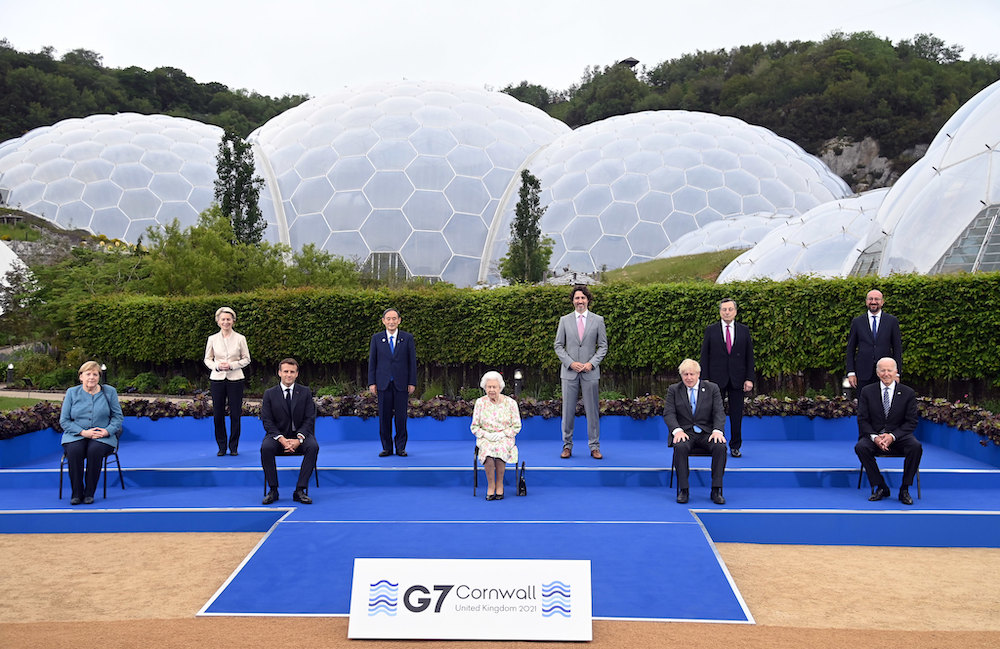A KEY outcome from the G7 meeting in Cornwall last month was the agreement for the world’s wealthiest liberal-democratic economies to provide “high-quality” financing for vital infrastructure in developing regions. The Build Back Better for the World (B3W) programme is widely seen as the G7’s response to China’s strategic influence through the Belt and Road Initiative (BRI), supported by institutions like the Asian Infrastructure Investment Bank.
How will B3W fare in the long run? Its prospects are daunting – to succeed will take a risky and complex combination of time, policy and resource synergy, and political will by G7 members and their key partners.
Yet, the odds are not completely against them. With an understanding of the diverse realities that anchor multiple regions and markets, flexibility in approach and staying true to the sustainable and good governance values that it supposedly upholds, B3W can make a difference in a world that’s still being ravaged by a pandemic. It also needs no small amount of pragmatism by its proponents.
What are the challenges that B3W faces?
First, it’s not the first time that other countries or groupings have attempted to rival the BRI, especially in the Asia-Pacific. Japan and the United States (US) had their iterations of the Free and Open Indo Pacific while India is still attempting to Act East. The Australia-Japan-US-led multi-stakeholder Blue Dot Network looked promising before eventually simmering down. Nevertheless, critics have already dismissed B3W as just the latest in a series of half-hearted and ultimately, ineffective alternatives to the BRI (read: counter-China).
Second, China will not be sitting still in the face of what it sees as the latest attempt to contain its signature global initiative. It has already come out swinging, branding the G7 summit as an anti-China summit that seeks to stymie its international engagement and interfere in its domestic affairs. This follows targeted statements against initiatives like the Quad, which Beijing has framed as an Asian Nato aimed at the strategic containment of China and its peaceful, rightful rise. No surprise then that “wolf warriors” are comparing the G7 with the old Eight-Nation Alliance which relieved besieged western legations during the Boxer Rebellion.
Third, B3W proponents themselves are barely making the effort to play down the notion that it isn’t a strategic response to China. This will only make it more difficult to receive buy-in in Southeast Asia, where policymakers are allergic to anything perceived as overtly anti-China. And make no mistake, success, or lack of, in Southeast Asia is what will make or break B3W.
Fourth, the BRI itself is changing to reflect both lessons learnt from its progress thus far and from developments within China itself. Reports indicate a new focus beyond infrastructure development, on the digital economy and technological innovation. China has also shown itself remarkably adept in adapting to local conditions after initial missteps. And contrary to criticism, it has worked with countries to restructure some of the BRI-related debts, or in some cases write them off entirely.
Domestically, the long-term impact of Dual Circulation, which sees China placing a greater emphasis on its domestic market and innovation as its engine for growth will change the way China engages with the world, and with it, the BRI.
Nevertheless, while B3W might be belated reply to response to the criticism that G7 members had much to say about values and best practices on infrastructure financing, but little to offer, there are real opportunities to leverage on.
Southeast Asia, despite its caution, would welcome options from the G7 and seek to diversity their sources of investment. Economies in this region are desperate for support to begin the long and painful recovery from recessions brought about by the pandemic. It is how these investments are framed, and their ability to bring about tangible, speedy changes on the ground that make the difference.

If the G7 is serious about B3W, it needs to commit. There are plenty of past examples to take into account. The BRI itself provides an excellent example of what works and what could be improved. Consider out-of-the-box approaches like seeking to complement or work with existing Chinese investments and projects – being exclusionary isn’t a luxury external stakeholders can afford. It isn’t just a question of building back or building better, it is also going about it with clear-headed strategic pragmatism.
This article was first appeared in the New Straits Times on 05 July 2021






